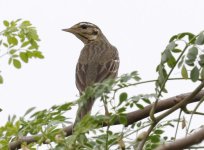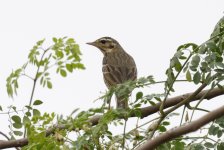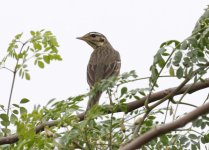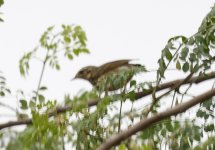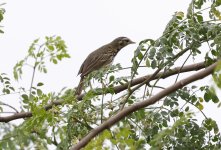Tragopania
Well-known member

Hello everyone, I'm looking for confirmation of this pipit's identification.
The pale-and-dark spots at rear-ear covert and the buffy frontal part of supercilium makes me think of it as Olive-backed Pipit. I don't know much how to separate either of these species based on mantle markings/streaks. Some Tree Pipits are also known to exhibit these features, which spin my head.
Can you please help with ID, preferably how to separate it from Tree Pipit, particularly such individual. I'd really appreciate your valuable response.
Malir, Karachi, Sindh, Pakistan
February 2024
© Salman Baloch
The pale-and-dark spots at rear-ear covert and the buffy frontal part of supercilium makes me think of it as Olive-backed Pipit. I don't know much how to separate either of these species based on mantle markings/streaks. Some Tree Pipits are also known to exhibit these features, which spin my head.
Can you please help with ID, preferably how to separate it from Tree Pipit, particularly such individual. I'd really appreciate your valuable response.
Malir, Karachi, Sindh, Pakistan
February 2024
© Salman Baloch




